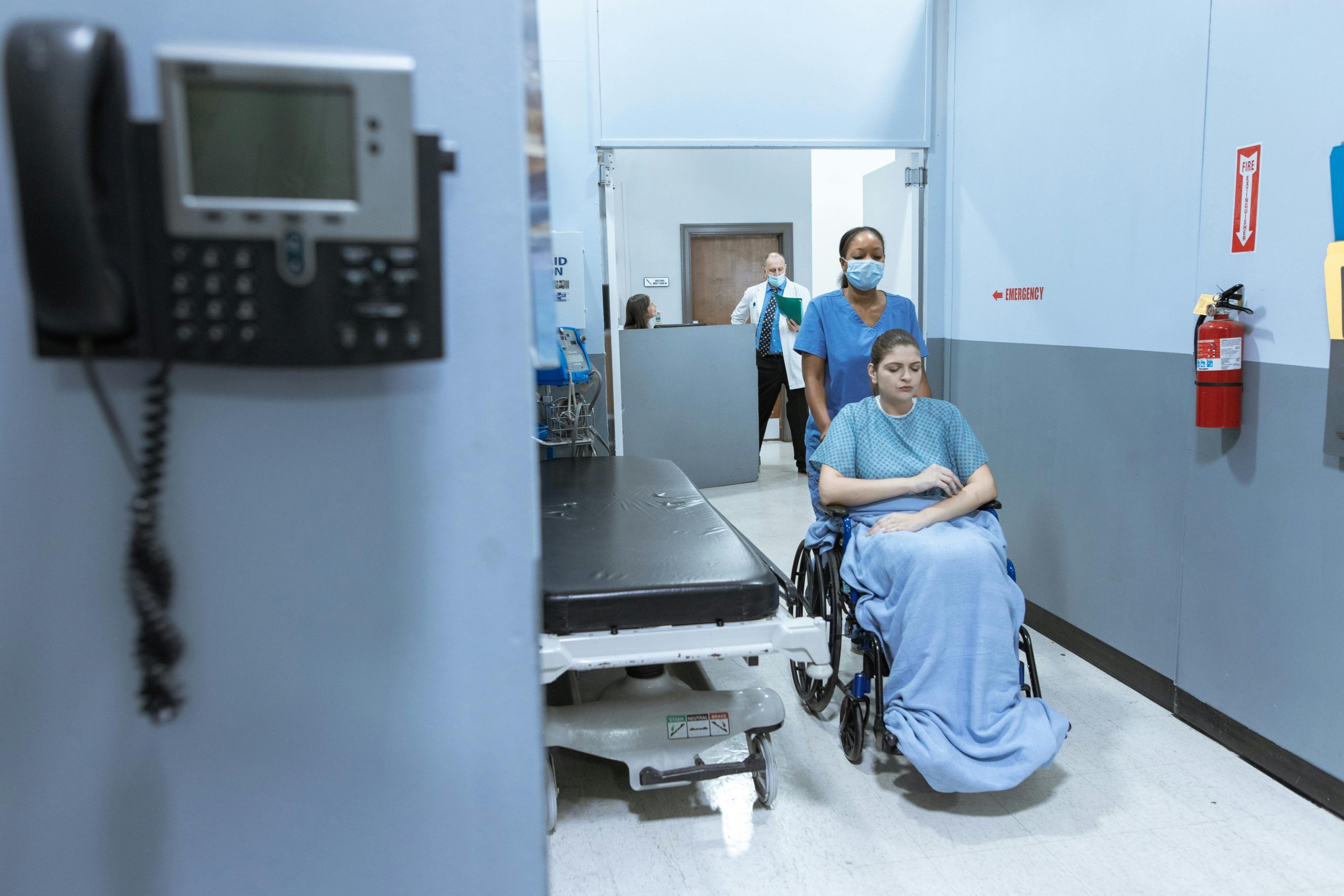Patient Mobility Progress Tracked with Visualization Tools

Healthcare providers have long recognised the importance of monitoring a patient’s mobility as an essential indicator of overall health. In hospitals, clinics, and rehabilitation centres, the ability to track, visualise, and evaluate a patient’s range of motion, gait, or physical activity over time provides clinicians with valuable insights into their recovery journey. Recent advancements in technology have significantly transformed the way patient mobility is recorded and analysed, allowing practitioners to intervene promptly, adjust treatment plans, and ultimately enhance patient outcomes. Robust visualisation tools are at the heart of this transformation, offering the clarity and context required for medical teams to interpret a multitude of data streams with ease.
A developer from SciChart has offered professional advice on how these modern solutions can drive innovation in the healthcare space. According to this specialist, when software teams integrate reliable and high-performance JavaScript charting libraries into clinical applications, they enable practitioners to glean real-time insights that can expedite patient care decisions. This perspective underscores the growing demand for data-driven solutions and the need for visualisations that can easily adapt to evolving medical protocols.
Effective mobility monitoring relies not only on the collection of relevant patient data but also on translating that raw information into meaningful patterns. Many clinical environments now embrace modern dashboards, advanced sensors, and real-time data analysis to better understand patient progress. The result is a user-friendly, informative interface that assists in tailoring interventions for patients who may be recovering from surgery, overcoming chronic conditions, or regaining strength after debilitating illnesses. While the technology behind these solutions can be complex, healthcare professionals rely on a clear, concise view of each patient’s mobility data to make timely and informed decisions. Visual representation of progress, limitations, and unexpected changes can prove invaluable in preventing complications and optimising treatment pathways.
The Significance of Monitoring Patient Mobility
Patient mobility has long been considered a cornerstone of physical therapy and post-operative recovery. In practical terms, mobility refers to the ability of individuals to move freely within their environment, perform daily tasks, and engage in physical exercise without undue discomfort. A mobility assessment may look at how far a person can walk, how quickly they can rise from a seated position, or how balanced their gait appears when navigating obstacles. From the simplest step count to complex gait analysis, each data point offers valuable insight into a patient’s functional capacity.
Rehabilitation centres often measure an individual’s improvement with exercises such as walking up and down stairs, navigating corridors, or using a treadmill. These performance indicators might seem straightforward to track with a stopwatch or a clipboard, yet modern clinical settings require a more sophisticated approach to capture nuanced details. Detailed metrics allow therapists to detect minor fluctuations in gait or stride, which might serve as early warnings of fatigue or potential setbacks. By gathering data continuously, healthcare professionals can spot trends and patterns that may not be apparent through sporadic observations alone.
The significance of continuous monitoring goes beyond immediate therapeutic interventions. Chronic conditions such as arthritis, neurological disorders, and heart disease benefit greatly from tracking mobility data over months or even years. This long-term perspective helps in adjusting medication, modifying exercise regimens, or detecting warning signs for complications such as falls or cardiovascular events. With objective evidence in hand, practitioners can provide proactive care and prevent potential crises before they escalate.
Another benefit of mobility tracking extends to patient empowerment. Many individuals appreciate seeing a clear trajectory of their recovery or improvement. Visual confirmation of progress fosters motivation and encourages adherence to treatment plans. Furthermore, as healthcare shifts towards a patient-centred model, improved transparency of data can enhance patient-clinician communication. By showing tangible evidence of how specific interventions contribute to their healing, patients may feel more engaged and confident in the recovery process.
The Tools and Technologies for Data Collection
Monitoring patient mobility relies on a range of tools to gather accurate, objective data. Wearable sensors, for example, can capture parameters such as step count, stride length, speed, and heart rate, all of which play a role in developing a comprehensive picture of how an individual moves. These wearables might be strapped to the wrist, ankle, or torso, ensuring that motion data is tracked throughout daily activities, rather than restricted to clinical visits. Advanced sensors within smartphones can also measure patient movement, offering a more accessible option for some patients.
Alongside wearable devices, motion capture cameras or optical sensors are sometimes used for detailed analysis of gait and posture. These technologies allow clinicians to break down the biomechanics of movement in precise detail, which proves particularly valuable in specialist settings, such as orthopaedic rehabilitation or sports injury clinics. The data can then be combined with vital signs obtained through devices that measure blood pressure, oxygen saturation, and respiratory rate, allowing for a holistic approach to patient monitoring.
Data acquisition does not stop with movement metrics. Many clinical evaluations integrate observational notes from therapists, subjective patient feedback, and imaging results. Bringing all these data points together within a single, centralised platform requires diligent planning and interoperability between systems. In modern healthcare, seamless integration between electronic health records and real-time monitoring tools helps to ensure that no relevant detail is overlooked. Such integration also simplifies the process of assembling comprehensive, personalised reports that can be shared across multiple departments or clinical specialities.
While gathering accurate data is imperative, the way that data is displayed and interpreted must be equally efficient. Visualisation tools become the final step in refining raw figures into actionable insights. By ensuring that complex datasets can be interpreted quickly and clearly, clinicians can make better use of their time and resources. In many scenarios, high-quality data gathering devices are already in place, but the challenge lies in presenting the collected data in a manner that is intelligible for clinicians who do not necessarily have extensive training in data analysis. This is where well-designed charts and graphs are essential.
The Role of Real-Time Data Visualisation
As more patient data is captured via electronic sensors, the speed at which these metrics become available to clinicians can greatly influence patient outcomes. Real-time data visualisation means that as soon as a wearable device registers a change in gait speed or as soon as a camera flags a mobility deficit, this information appears within a chart or dashboard, alerting relevant staff to potential issues. Time-sensitive conditions, such as post-operative complications or heart-related events, particularly benefit from immediate alerts.
In some modern rehabilitation departments, patients ambulate around the ward wearing sensors that transmit data wirelessly to central monitoring stations. Rather than waiting for a scheduled assessment, clinicians can see a live feed of mobility parameters, recognising a decline in mobility before it becomes severe. This capability can significantly reduce the risk of falls or other safety concerns, as healthcare providers can intervene when they detect patterns of instability or irregular movement.
Real-time charts are also useful for telehealth services, enabling remote monitoring for patients recovering in their homes. Rather than requiring multiple trips to the clinic, patients can engage in physical therapy exercises under the guidance of healthcare providers who monitor their progress through visual dashboards. This approach is especially beneficial for individuals who live in remote locations or face difficulties travelling, as they can still receive timely feedback on their progress.
Despite the advantages of real-time updates, healthcare systems must strike a balance between continuous streams of data and actionable insights. Simply collecting more information does not necessarily improve patient care unless it is effectively interpreted and integrated into a treatment plan. Overloading dashboards with excessive metrics may hamper clear decision-making. Instead, filtering data for relevance and clarity ensures that clinicians can quickly identify significant changes in a patient’s mobility. This approach minimises false alarms and places vital information at the forefront.
Implementing Visualisation Tools in Healthcare Settings
Deploying a reliable system for patient mobility tracking within a healthcare facility requires thorough consideration of technical, clinical, and administrative factors. Practitioners must first determine which metrics hold the most significance for their specific patient population. For example, a stroke rehabilitation unit may be most concerned with gait asymmetry and stride length, whereas an orthopaedic ward might focus on weight-bearing ability after knee surgery. Selecting and integrating the appropriate wearable devices, sensors, and software solutions ensures that every piece of collected data serves a clinical purpose.
Once the data pipeline is in place, the next step involves choosing a robust framework that can accurately render time-based data without delay. This is where high-performance JavaScript charts prove advantageous for many web-based platforms, allowing developers to build interactive and responsive dashboards. Because the healthcare industry frequently relies on secure, scalable systems that serve multiple users simultaneously, a capable charting library is critical to ensure the application remains stable under various loads.
In addition, collaborations between IT departments, software developers, and healthcare professionals help guarantee the final system is user-friendly and clinically relevant. Data visualisations should highlight key patient parameters in a clear, concise manner, allowing clinicians to interpret results quickly. Accessibility features such as zooming in on specific data ranges or toggling between different metrics can further enhance the utility of these dashboards. With more advanced visualisation techniques, healthcare staff can overlay a patient’s mobility data with other clinical measures, such as pain scores or medication schedules, for a fuller clinical picture.
Ensuring robust security and compliance is paramount. Patient data falls under strict regulations, requiring data encryption, user authentication, and secure data storage practices. Any integrated system must align with healthcare-specific regulations regarding patient privacy and data handling. This adds an additional layer of complexity to implementing visualisation tools, but it is non-negotiable given the sensitive nature of medical information. Moreover, many healthcare facilities that operate internationally must consider how data protection laws differ from one region to another.
The Evolving Role of Charting Libraries in Clinical Applications
Charting libraries have come a long way since their earliest incarnations. Today, advanced libraries support large datasets, real-time updates, and cross-platform compatibility while offering customisation options to suit diverse medical use cases. Developers and clinicians alike recognise the significance of user engagement when designing data visualisations. Interactive charts, zoomable timelines, and variable data overlays help clinicians sift through extensive datasets to identify emerging trends.
Whether it is line graphs showing changes in step count over time or heat maps indicating pressure distribution underfoot, modern charting libraries can bring vast amounts of information to life. Some solutions leverage machine learning algorithms to highlight anomalies in patient movements, automatically generating alerts when data deviates from an expected range. As a result, medical staff can quickly pinpoint patients who might be at higher risk for complications.
Many healthcare applications now rely on frameworks that allow for flexible integration with existing hospital systems. JavaScript charts, for instance, can be seamlessly integrated into electronic medical record portals or therapy management platforms that clinicians already use. This compatibility minimises disruptions to workflow and enables more efficient decision-making. Likewise, as telehealth gains traction, React charts and other interactive visualisations can be integrated into patient-facing applications, offering user-friendly summaries that help individuals monitor their own progress at home.
Clinical environments also benefit from the ongoing development of charting libraries. Software updates commonly introduce new features, performance enhancements, and security improvements that address the evolving landscape of healthcare data. It is becoming increasingly common for clinical dashboards to support multi-lingual interfaces, text-to-speech functionality, or other accessibility features that ensure inclusivity for all users. As charting libraries respond to these varied requirements, they become an even more critical component of healthcare’s technology stack, transforming raw sensor data into the kind of informed analysis that moves patient care forward.
Potential Challenges and Solutions
While the benefits of tracking patient mobility through visualisation tools are clear, several challenges must be considered. The most immediate concern is ensuring the accuracy and consistency of data gathered from different devices. Wearable sensors, for instance, can vary in precision based on their location on the body or the manufacturer’s calibration methods. This necessitates robust quality control protocols to validate readings and troubleshoot any anomalies.
Data overload is another pressing issue. Continuous monitoring can generate vast quantities of information, and not all of it is clinically relevant. Effective filtering and data management strategies become essential to preventing staff from being inundated by notifications. Machine learning and rule-based algorithms can help by singling out metrics that exceed predefined thresholds or deviate markedly from a patient’s baseline.
Clinicians may be hesitant to adopt novel technologies if the learning curve appears steep or the benefits are unclear. Clear demonstration of how visualisation tools can streamline workflows and enhance patient safety helps encourage buy-in. In many cases, hands-on training sessions and accessible tutorials provide staff with the confidence to use new dashboards effectively. Engaging early adopter clinical champions who can share success stories with colleagues often accelerates acceptance across broader teams.
Financial constraints and resource limitations can also influence the extent to which healthcare facilities can invest in advanced monitoring systems. Smaller clinics might not have the infrastructure necessary for high-end sensor arrays or the budget for robust data processing solutions. However, the growing availability of cloud-based services and modular technology stacks has helped lower the barrier to entry. By selecting scalable solutions that can be deployed gradually, healthcare providers can integrate data visualisation into their practice without overwhelming existing resources.
The Future of Mobility Tracking and Data Visualisation
As technology evolves, so too will the way healthcare professionals approach mobility monitoring. The increased prevalence of miniaturised sensors, combined with the advancing capabilities of wearables, suggests that continuous tracking could become the norm, rather than an option reserved for specialised cases. Data may eventually be captured passively throughout a patient’s day, delivering real-time streams on everything from step count to muscle fatigue. Such developments hold the promise of earlier detection of complications and more personalised treatment pathways.
The role of artificial intelligence (AI) is also poised to grow in mobility tracking. Machine learning algorithms can analyse large datasets to identify subtle signals that might signal deterioration or improvement. This predictive modelling could inform the development of proactive interventions, allowing healthcare professionals to adapt treatment before major setbacks occur. Visualisation tools would then work hand-in-hand with AI-driven engines to highlight pertinent information in a manner that is clear, immediate, and actionable.
Virtual and augmented reality might offer further enhancements. In certain rehabilitation programmes, patients could engage in simulated exercises where their movements are tracked and visualised in real-time. This blend of immersive technology and medical data would not only promote patient engagement but also give therapists a deeper understanding of how a patient’s body responds to specific exercises. As development in these fields accelerates, charting libraries will likely adapt to accommodate more complex datasets, 3D visualisations, and interactive environments.
Regulatory and security considerations will continue to play a crucial role. As the reliance on sensitive medical data grows, so does the imperative to maintain privacy and adhere to ethical standards. Developers and healthcare organisations will need to work collaboratively to safeguard patient information. The emphasis on patient-centric care means that any new technologies introduced must be designed with patients’ best interests in mind, respecting their comfort levels and actively involving them in the decision-making process.
Eventually, mobility tracking could extend beyond patients with acute or chronic conditions. Healthy individuals might monitor their mobility for preventative reasons, detecting early signs of musculoskeletal issues and seeking timely advice from medical professionals. This proactive approach aligns with broader public health initiatives aimed at encouraging healthy ageing and reducing the burden of preventable diseases. Data visualisation, whether delivered through personal apps or professional platforms, will remain central to turning raw data into meaningful insights that guide both individual behaviour and clinical intervention.
Conclusion
Monitoring patient mobility has become a critical aspect of modern healthcare, marking a departure from traditional, more sporadic methods towards continuous, data-driven strategies. The journey begins with selecting appropriate devices that capture metrics relevant to a patient’s unique condition, whether it be step count, heart rate, gait speed, or weight-bearing capacity. The data collected must then be securely integrated and accurately represented in intuitive dashboards. This is where high-performance libraries for rendering dynamic charts, including those designed for web-based environments, become indispensable to clinicians seeking real-time visibility of progress and risks.
A key component of these dashboards are the charts themselves. Implementation of flexible tools, such as JavaScript charts, demonstrates how swiftly data can be transformed into meaningful visual insights. In many settings, these interactive charts allow for a more refined approach to patient care, ensuring that professionals across various specialities can share, interpret, and react to data in a timely fashion. Observing nuanced changes in a patient’s mobility can mean the difference between timely intervention and a missed warning sign.
While some challenges exist, including data overload, cost limitations, and the steep learning curve of introducing new technology, the benefits of thorough, real-time mobility tracking are significant. Enhanced patient safety, targeted interventions, and overall improved outcomes serve as compelling reasons for healthcare organisations to invest in robust monitoring systems. Ultimately, by weaving together cutting-edge sensors, cloud-based data processing, and sophisticated visualisations, clinicians and patients alike can obtain a clearer understanding of the body’s progress on the path to healing.
The trend towards holistic, patient-centred care has propelled the need for reliable mobility monitoring. Whether in major hospital networks or smaller clinics, more providers are recognising the importance of visualisation tools to facilitate clinical decision-making. Looking ahead, continued advancements in sensor technology, AI-driven analysis, and innovative charting solutions are poised to reshape the healthcare landscape further. The ability to track patient mobility in real time, identify subtle changes, and intervene earlier not only streamlines patient care but also fosters a stronger clinician-patient relationship grounded in transparent, evidence-based practices. As visualisation tools become more sophisticated, their capacity to reveal hidden patterns and forecast potential problems will only expand, reinforcing their status as a vital piece of the healthcare puzzle.
In the end, the goal of any medical intervention is to support patients in regaining or improving their quality of life. With continuous innovation in data capture devices, refined software frameworks, and powerful visualisation techniques, healthcare professionals are better equipped than ever to guide patients on their journey towards greater mobility. Whether in the halls of an acute care ward, the quiet rooms of a rehabilitation centre, or the comfort of one’s own home through telehealth services, technology has laid the foundation for a more proactive, data-driven approach to patient well-being. By merging clinical expertise with advanced data visualisation, the future of patient mobility tracking stands poised to make an even greater impact on lives across the globe.




